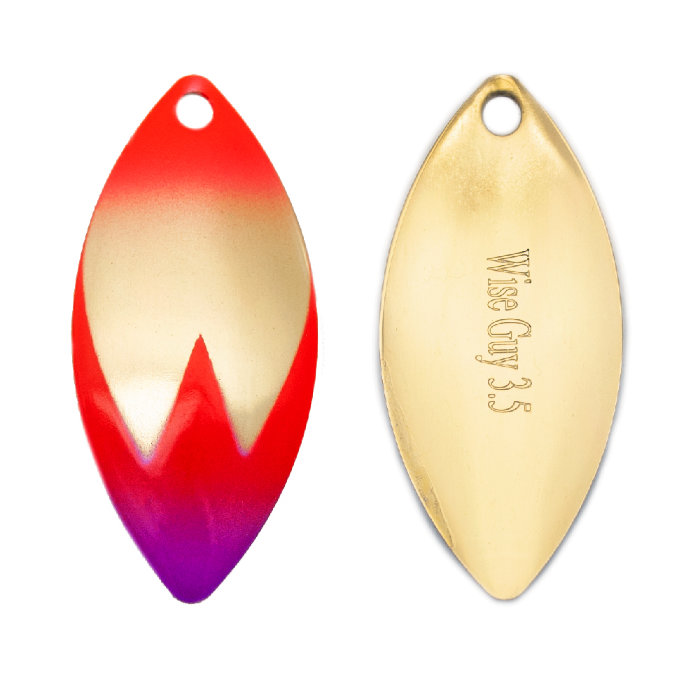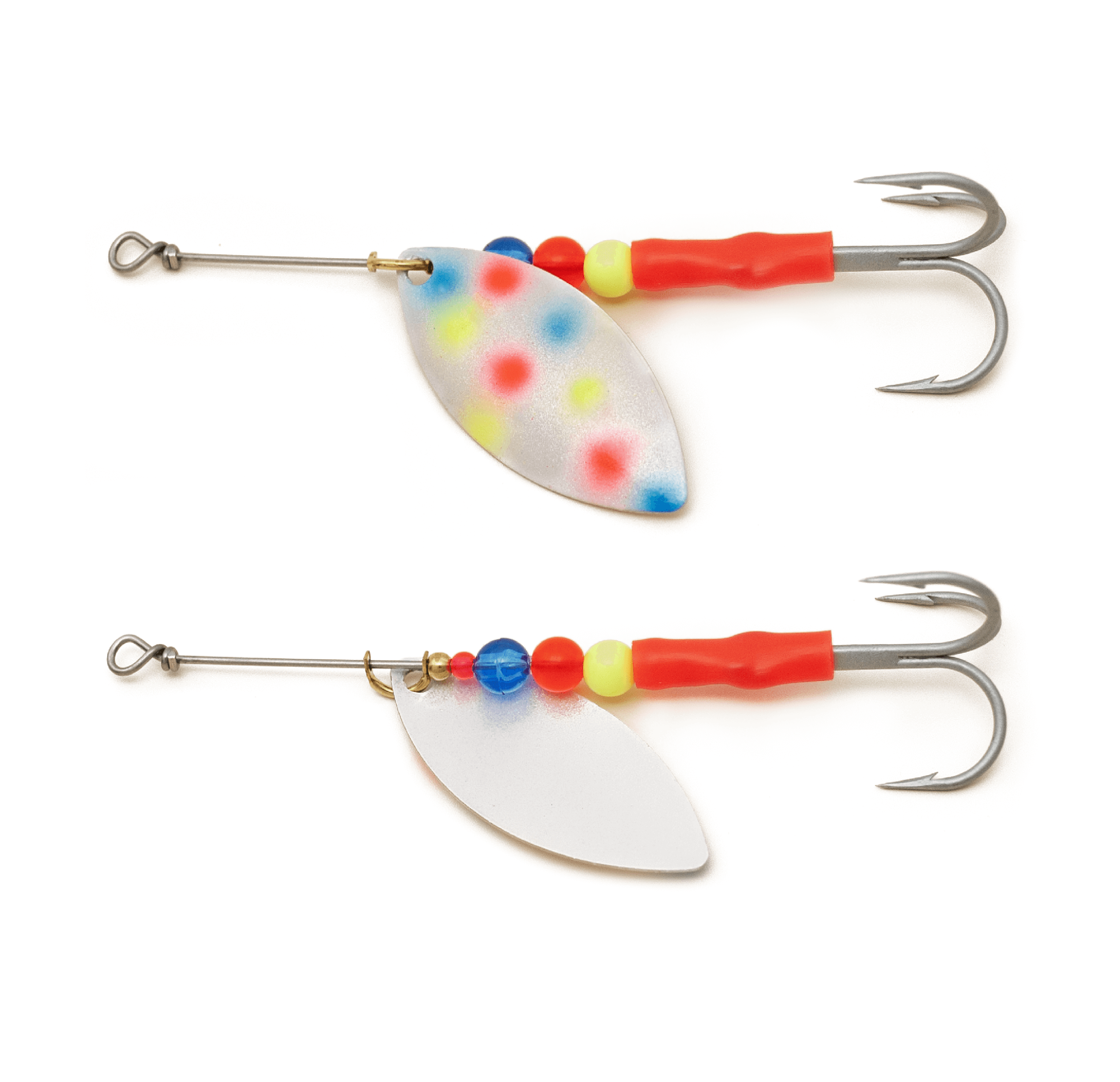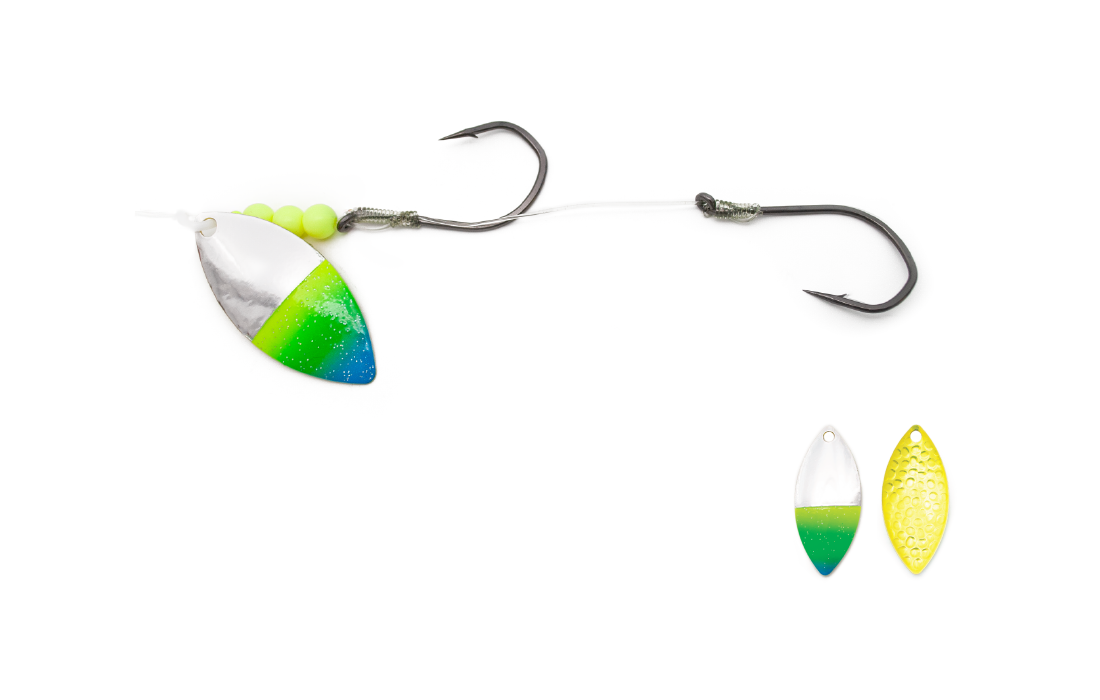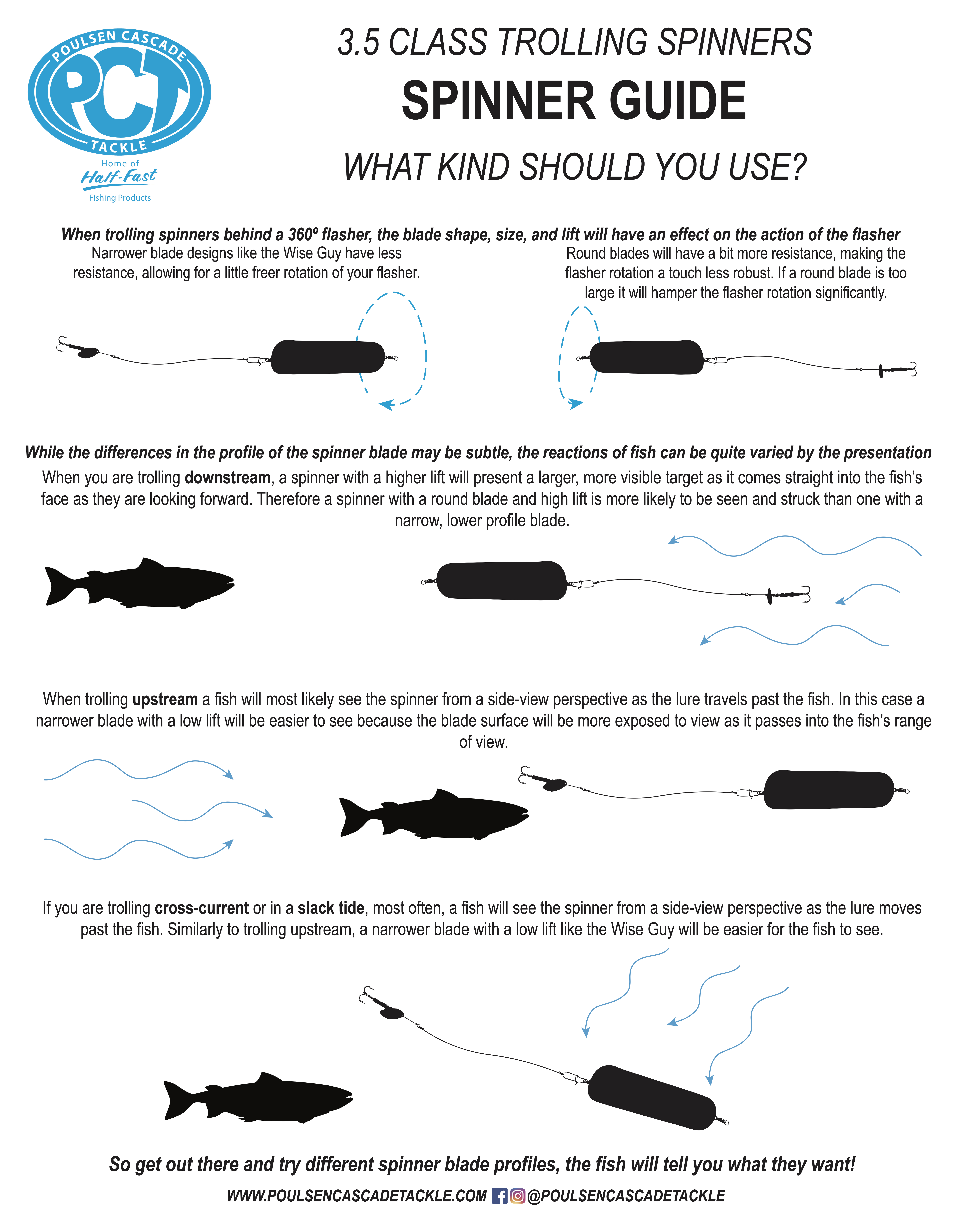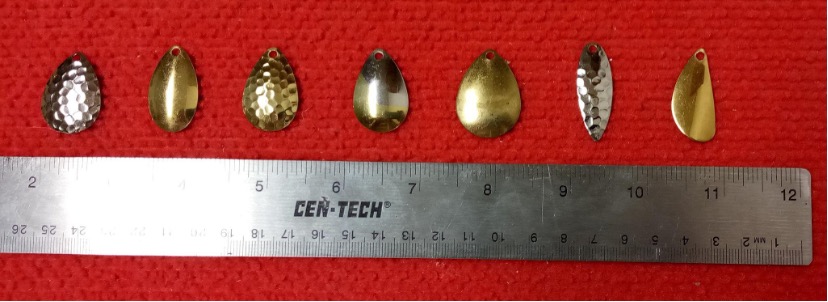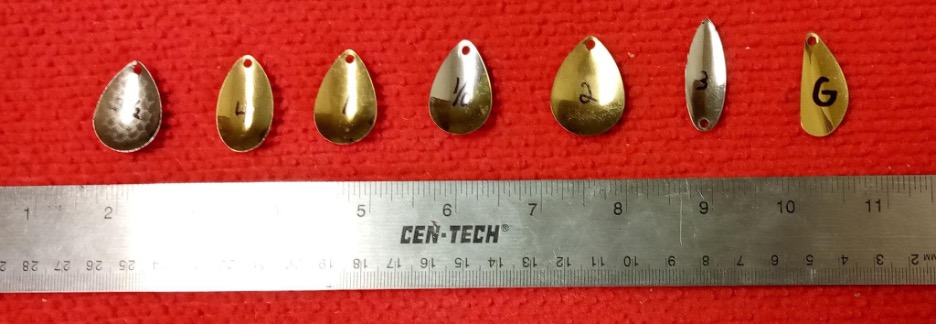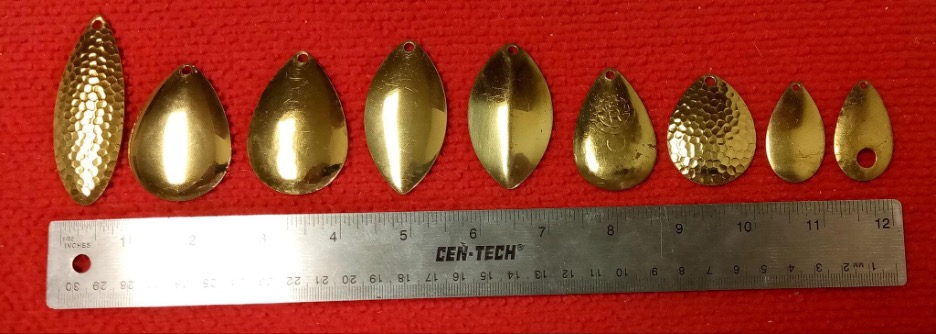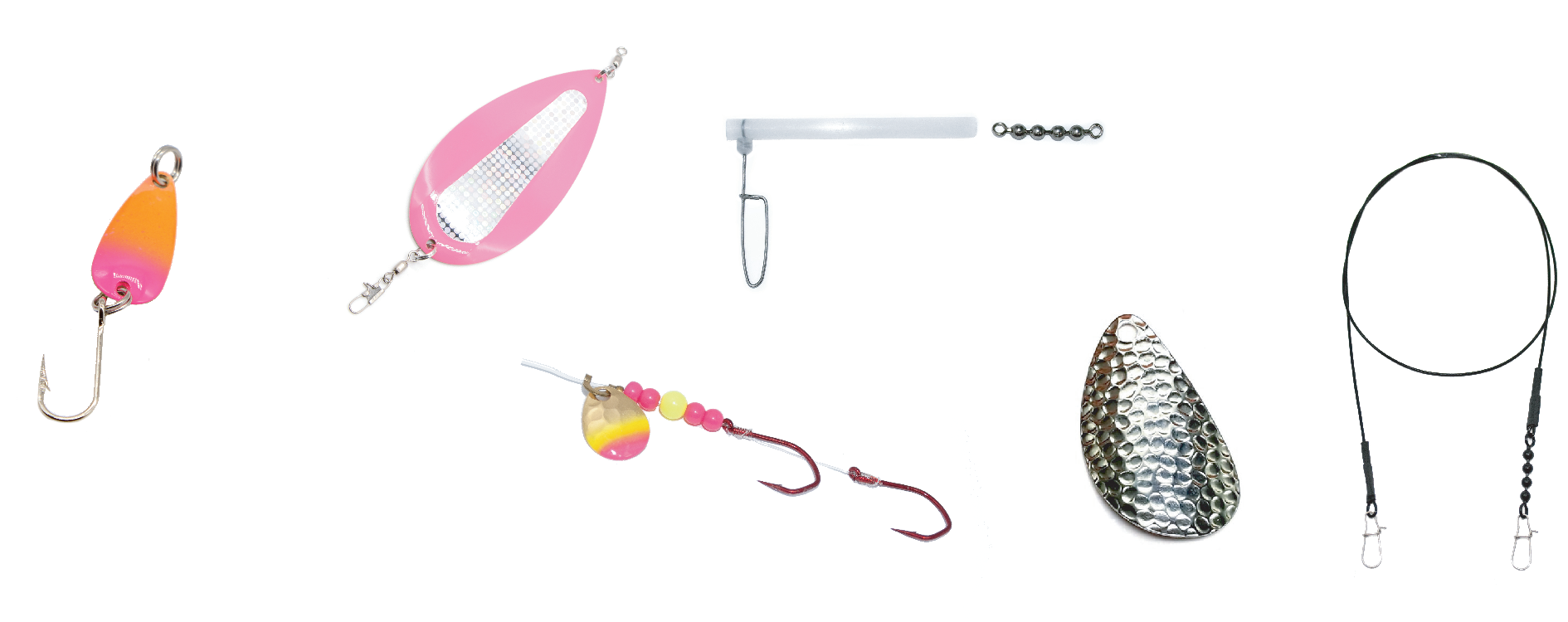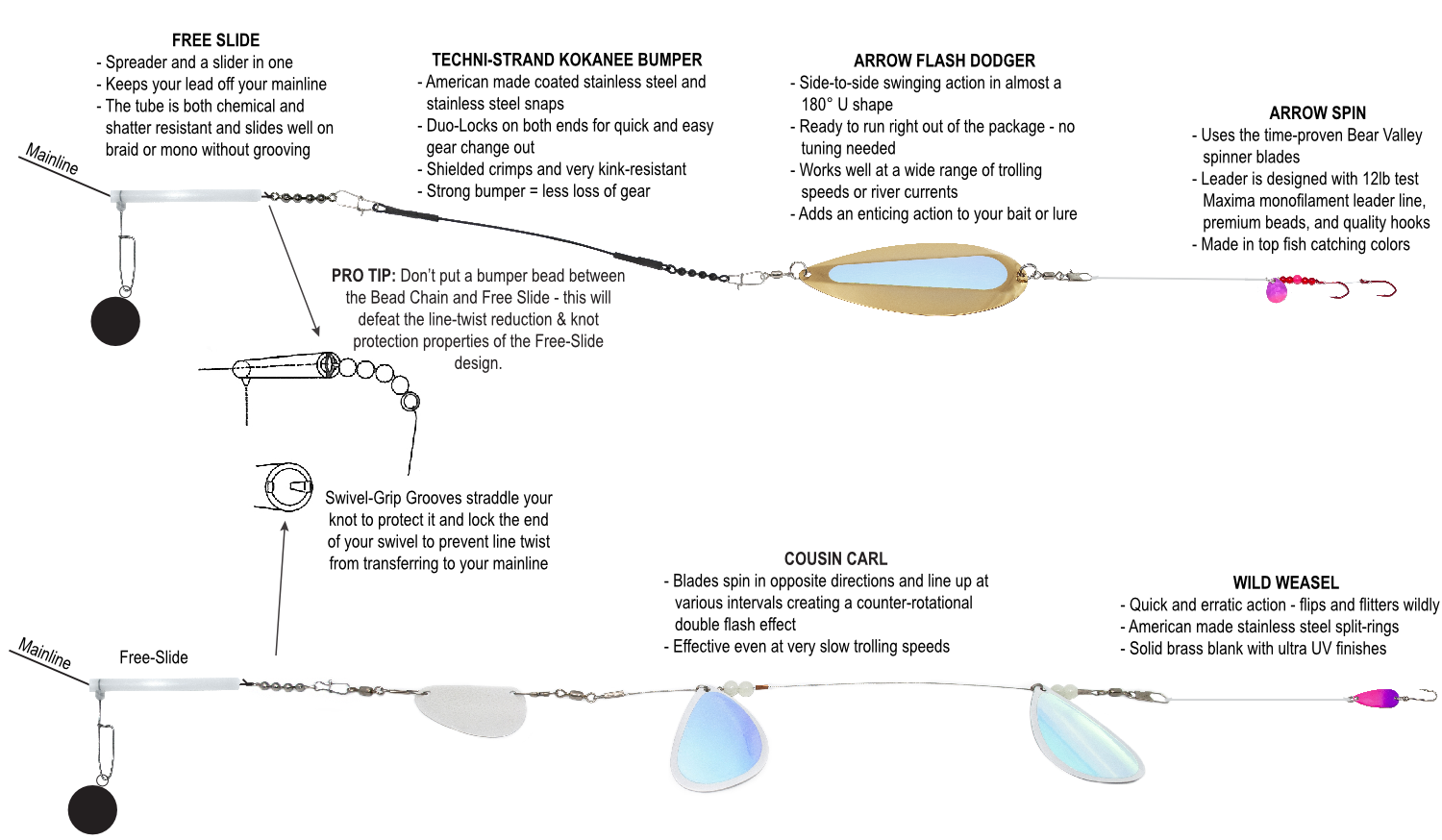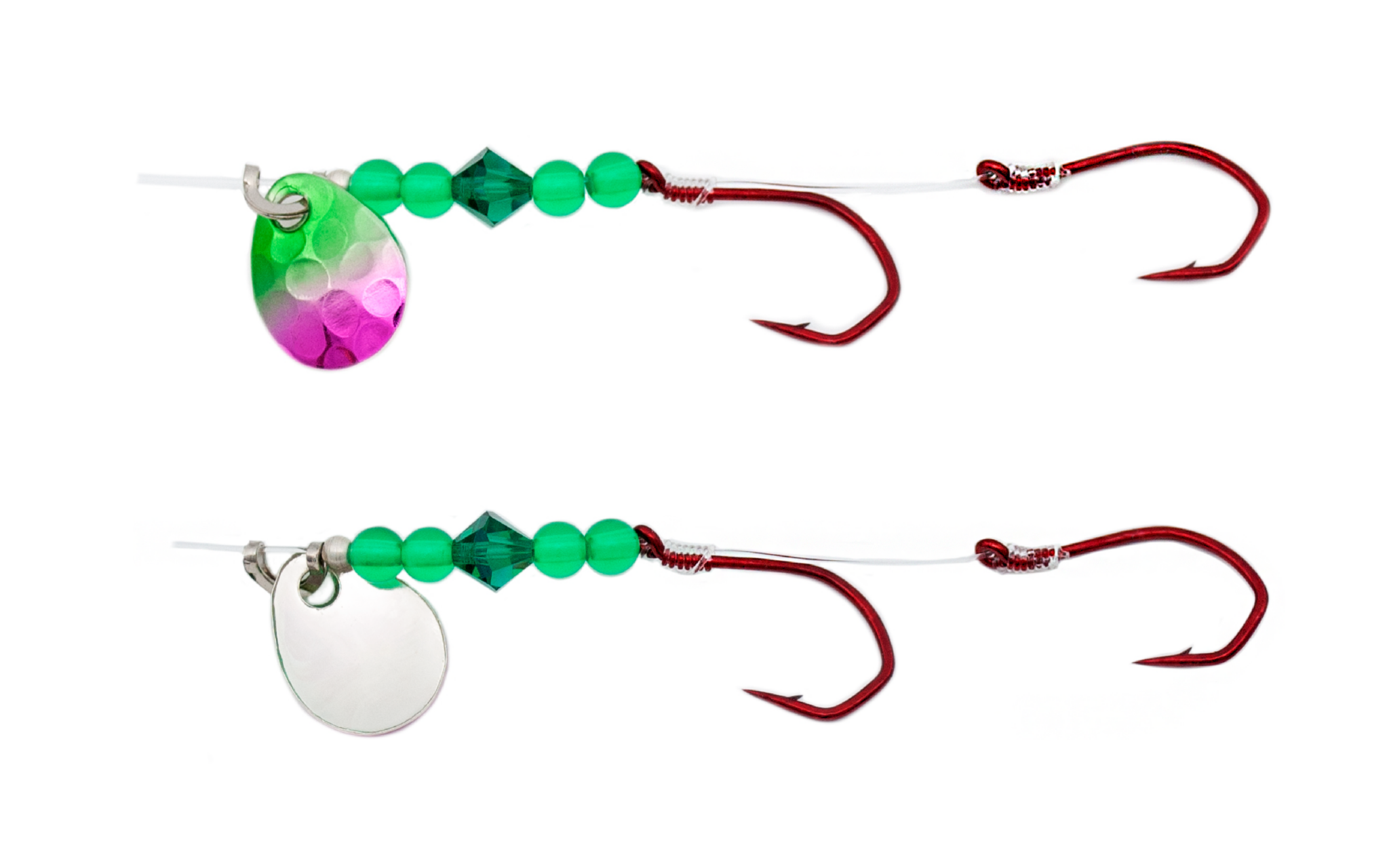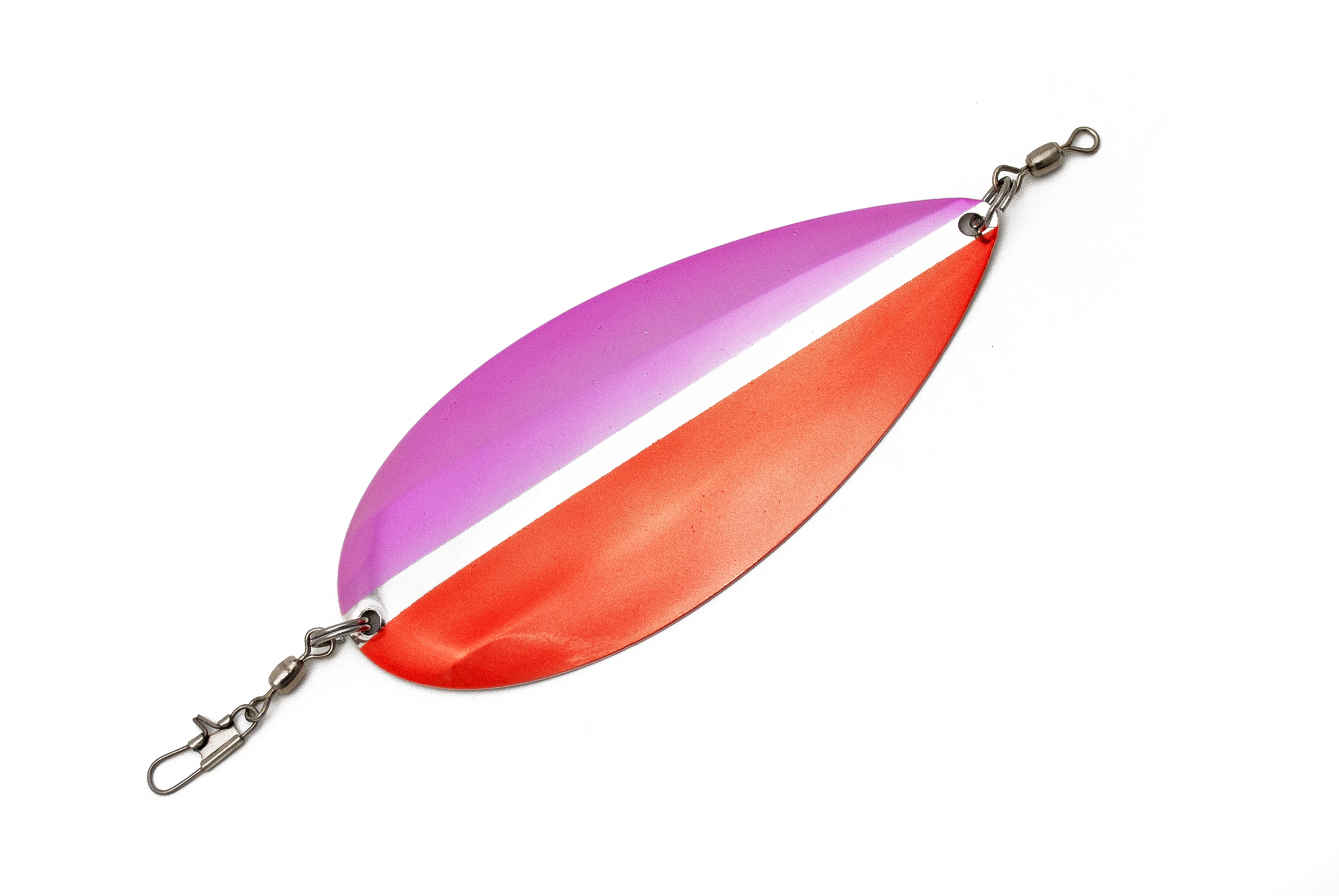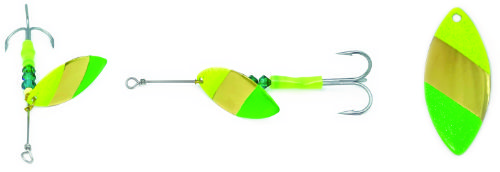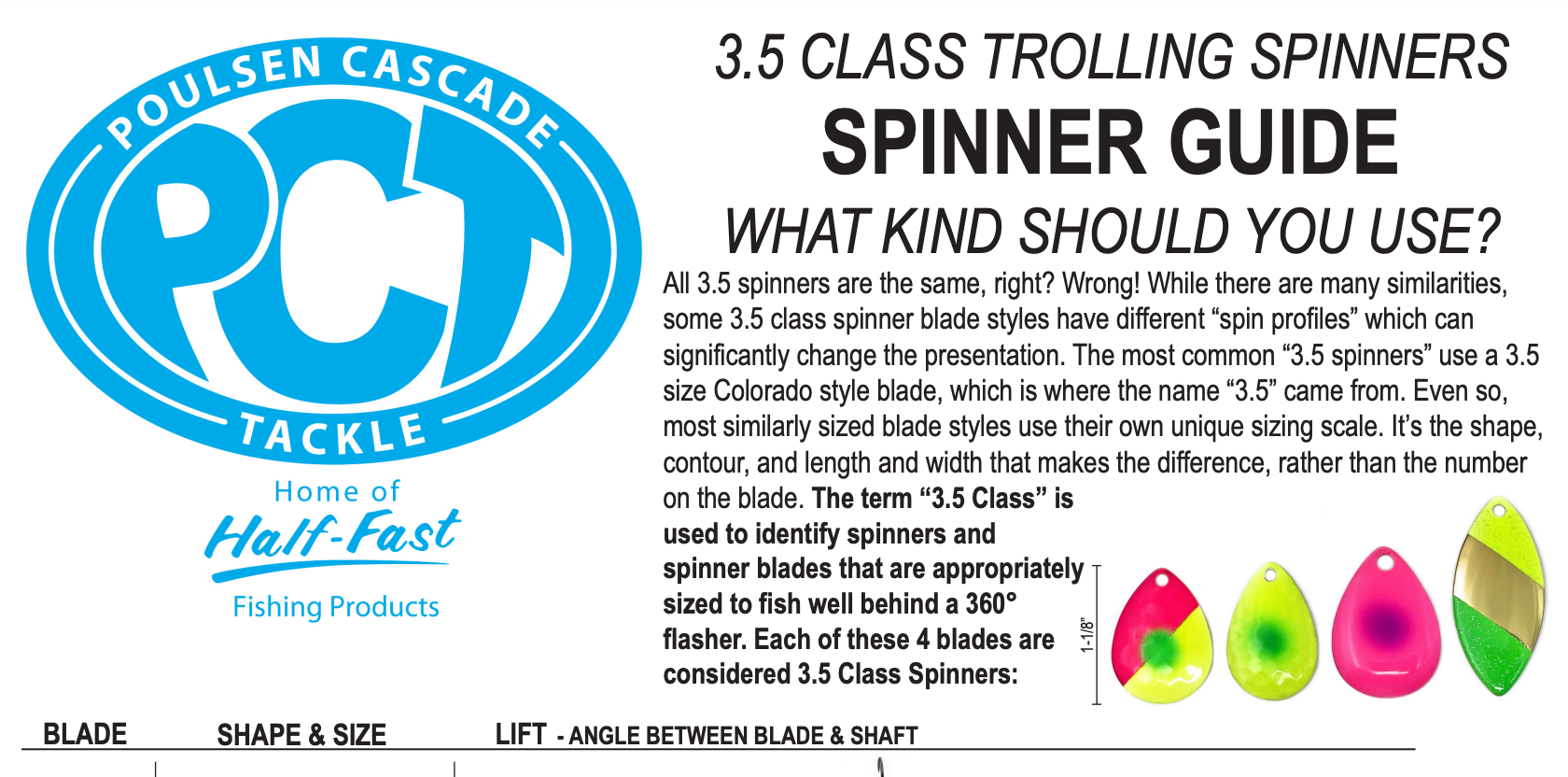A Different 3.5 Spinner for 360° Flashers
A Different 3.5 Spinner for 360° Flashers
Wise Guys Stand Out in a Crowd of 3.5 Colorado Blades
A round, or Colorado-style blade is not always the best choice for 360 salmon trolling.
It has its place, but sometimes there is a better option. Under certain circumstances, a Wise Guy will outperform everyone else’s spinners in the water.
So, when would you troll a Wise Guy instead of a round blade?
It’s a matter of perspective. That is, the perspective of the fish, not the angler.
If trolling in the same direction as the current, whether tidal or river, you are essentially fishing into the face of the fish.
That’s because fish naturally tend to orient themselves facing into the oncoming water flow.
Under those circumstances, most spinner blade styles will work, but a round blade will present the largest, most visible profile due to the nearly perpendicular lift of the blade.
When trolling in any direction other than head-on into the fish, a blade with less lift will be more visible due to its lower profile spin.
This includes
- Trolling against the current
- Trolling across it from an angle
- Trolling in slack water

Under these circumstances, the Wise Guy 3.5 spinner blade is the best choice due to the low lift, low profile spin.
We asked two salmon fishing guides, Gary Geis and Ed Chin, some key questions about their experience with Wise Guy Spinners.
Gary Geis is the owner and operator of Double G Guide Service. He has been either fishing or guiding for salmon in the Pacific Northwest since he was a teenager.
Ed Chin is a pro staff member for Lowrance Electronics and guides for salmon and other game fish via All About Adventure Excursions.
Here is what they say about Wise Guy spinners and Spinner Blades:
Q: How often do you use Wise Guy Spinners or Blades?
Gary: I have at least one rod daily using a Wise Guy blade in line spinner or a shrimp spinner.
Ed: I fish at least one rod with a wise guy blade, either my rod or one customer’s rod.
Q: Have there been times when Wise Guys have outperformed Colorados for you?
Gary: Wise Guy blades perform better than others because of their longer and tighter profile.
Ed: YES, the wise guy blade has outperformed Colorado Blades, especially if the fish are pressured by the heavy boat presence. Usually, we can pick up a fish right behind someone who is fishing a Colorado Blade in front of us.
Q: Are there certain times or conditions when you prefer Wise Guys over other blade styles?
Gary: I will use a Wise Guy blade at just about any time of the tide, or if the water color is a little off, it is a little more visible
Ed: YES, depending on the weather conditions, I like using the Wise Guy during bright sunny days and overcast days. They tend to send out a different vibration and attract fish to strike.
Q: Do Wise Guys work well with 360 flashers for you? Is the rotation of the flasher impeded at all by the action of Wise Guys?
Gary: The Wise Guy blade has less resistance than others and rotates more easily and tighter to the line or shaft, which makes it perform exceptionally well with a 360 flasher.
Ed: YES, they work well with 360 flashers, I don’t notice a difference in the rotation of the flasher, and I don’t see them impede the action of the flasher.
↪ See How Wise Guys Look Behind a 360° Flasher
↪ Checkout the different color selections by clicking below…
To simplify the whole 3.5 mindset and reduce confusion about actual spinner sizes, it can be helpful to think of all spinners that troll well behind a 360° flasher as 3.5 class spinners.
It is not the stated size for a spinner or spinner blade that counts, but rather how it behaves when trolled. To help illustrate, remember to check out this ‘Tech Sheet’.
Poulsen Cascade Tackle, based in the Pacific Northwest, specializes in crafting high-quality tackle solutions tailored to the needs of dedicated anglers. Renowned for innovative designs, exceptional craftsmanship, and the use of premium materials, the company is a trusted name in the fishing community.
We invite you to Share Your Thoughts and Questions. Please Submit Your Comments.

